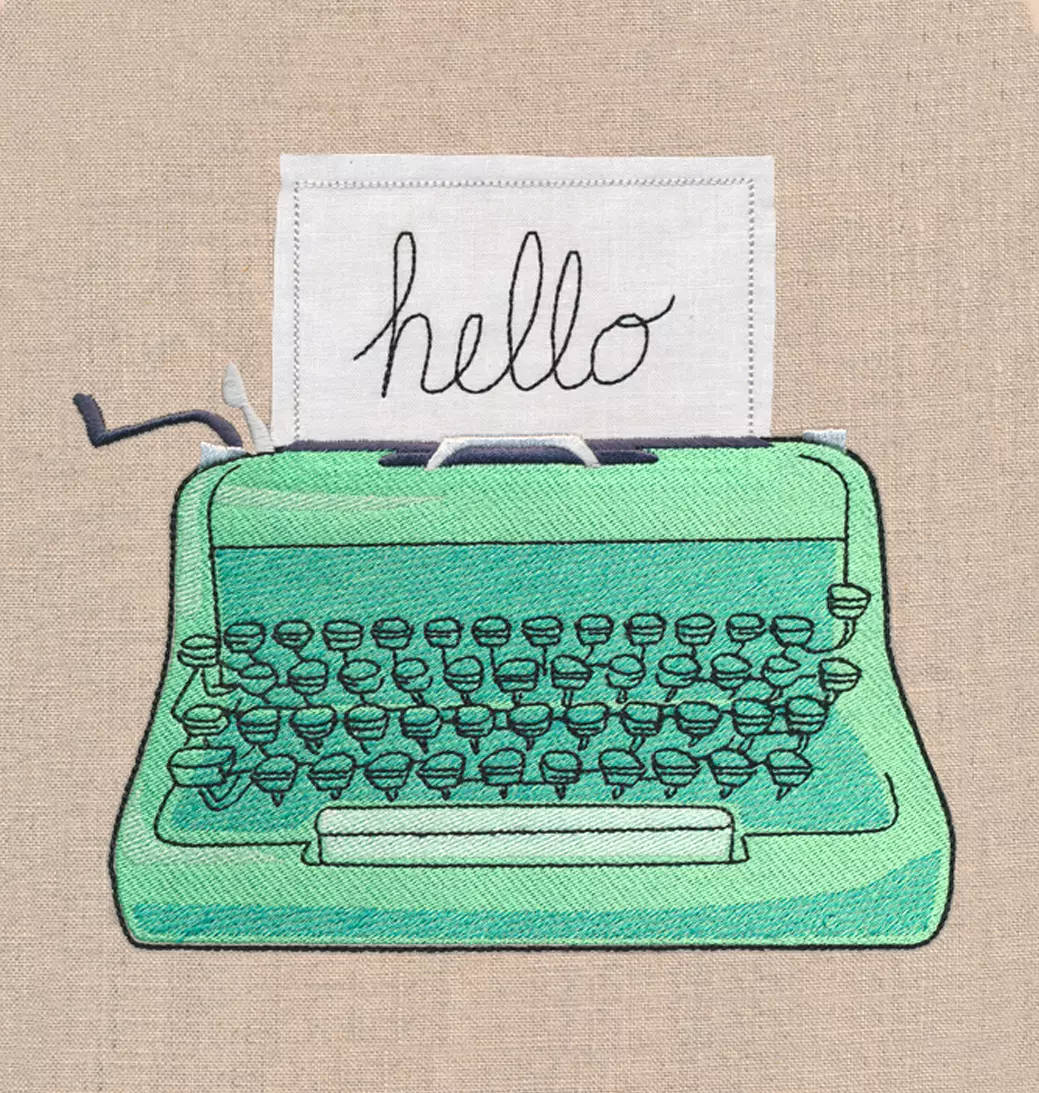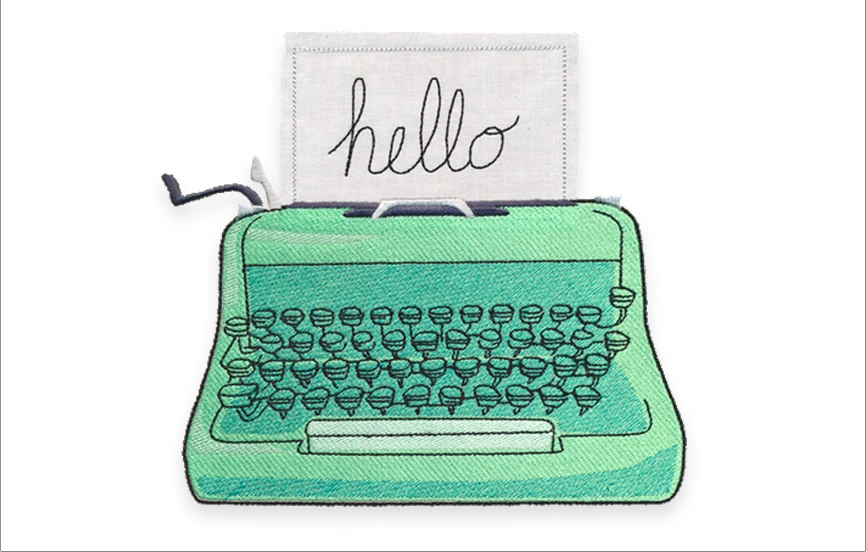Add fantastical flair to your projects with a magical multi-piece fabric butterfly. Beautiful life-like details and straightforward construction make this the perfect design for embellishing home decor and more. Project instructions will walk you through the process of creating your own.
Supplies
To stitch your multi-piece fabric butterfly, you'll need:
- 1/3 yard quilters cotton
- The Multi-piece Fabric Butterfly (In-the-Hoop) design
- Water-soluble stabilizer (like Vilene or Sulky Ultra Solvy)
- Medium weight cutaway stabilizer
- Embroidery thread
- Scissors
- Hand sewing needle and thread, or clear glue (if preferred)
- Iron and ironing board
- Pressing cloth
Designs Used
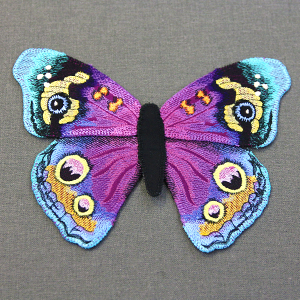
Freestanding lace and fabric designs have been specially digitized for water-soluble stabilizer. After the stabilizer is removed, beautiful fabric and embroidery remains.

When you download the butterfly design, you will find multiple files. Some are the embroidery files, and the others are dieline files marked with the letters "DL." Dielines are used to cut the fabric to the correct shape and size.
Open and print each dieline file using embroidery software. If you do not have embroidery software, Wilcom TrueSizer is a free program to use.
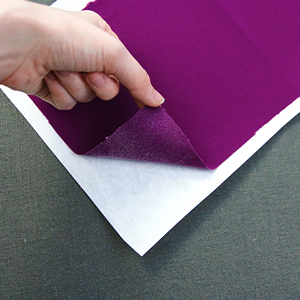
First, spray one side of a piece of cutaway stabilizer with temporary adhesive. Smooth the stabilizer onto the wrong side of the fabric piece.
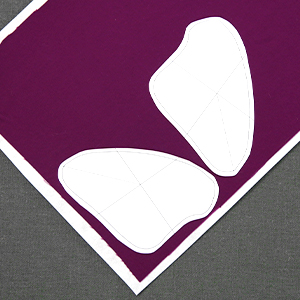
Then spray the backside of the printed, front piece dielines with temporary adhesive and smooth it onto the right side of the fabric. As both front and back pieces need cutaway stabilizer, also spray and place the back dieline pieces.
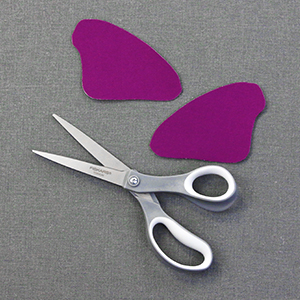
Cut the dieline shapes out of the adhered fabric and cutaway stabilizer, then remove the paper dielines. For this design, the front and back fabric pieces for each file will be backed with cutaway stabilizer.
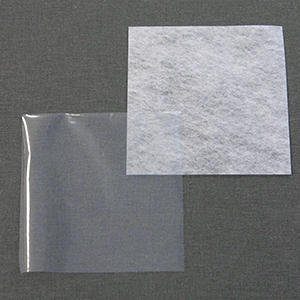
There are a couple of different kinds of water-soluble stabilizer. One is clear and plastic, and that brand is Sulky Ultra Solvy. The other is soft and fibrous, called Vilene. Both will work very well. Vilene is used in this demonstration.
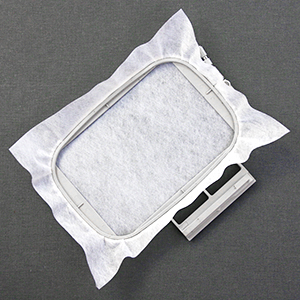
Hoop the water-soluble stabilizer firmly. Make sure it is drum tight with no wrinkles.
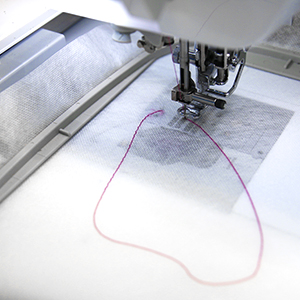
Attach the hoop onto the machine and load the first embroidery file (not the dieline files). Embroider the design. The first thing to embroider will be a dieline (or outline stitch). This marks the area on the stabilizer where the fabric piece will be placed.
We recommend using a 75/11 sharp sewing needle instead of an embroidery needle. The sharp sewing needle has a finer point, and it will make smaller perforations in the stabilizer.
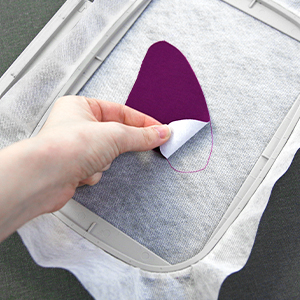
After the dieline has sewn, remove the hoop from the machine but do not unhoop the stabilizer. Spray the stabilizer side of the front fabric piece with temporary adhesive. Smooth the front fabric piece onto the water-soluble stabilizer inside the sewn dieline.
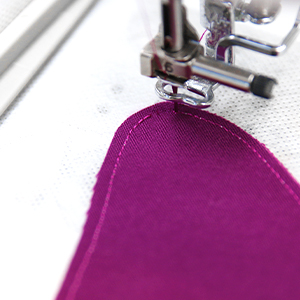
Then, place the hoop back onto the machine and embroider the tackdown for the front fabric piece. This tackdown will hold the fabric piece in place for the remainder of the design.
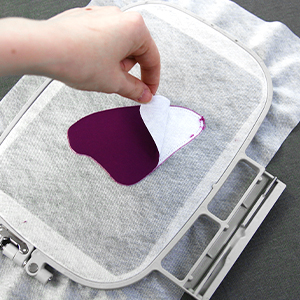
Before sewing the back piece tackdown, remove the hoop from the machine but do not unhoop the stabilizer. Turn the hoop over so the back side of the embroidery is facing up. Spray the stabilizer side of the back piece with temporary adhesive and smooth it in place within the sewn dieline on the back side of the hoop.
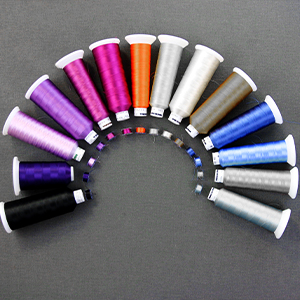
As the freestanding fabric pieces will be seen from both sides, wind a bobbin to match each thread color used in the design.
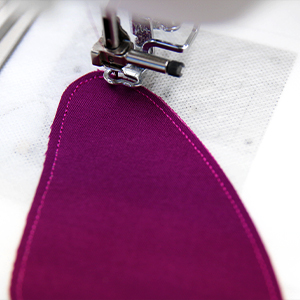
Using a matching bobbin, embroider the back piece tackdown. This will hold the back piece in place for the rest of the design.
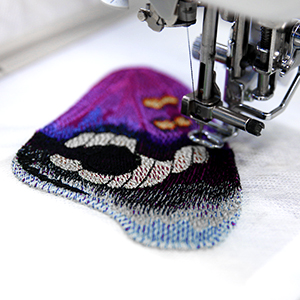
Then, follow the color change sheet and embroider the rest of the design, changing out the bobbins to match every thread color.
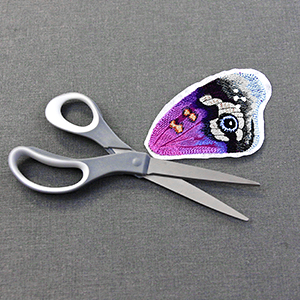
After the embroidery has finished, unhoop the stabilizer. Using scissors, carefully trim away the excess stabilizer from around the design.
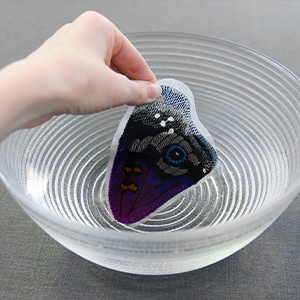
The stabilizer's packaging should give instructions for removing the excess. For Vilene, soak the embroidered fabric for 2-4 hours.
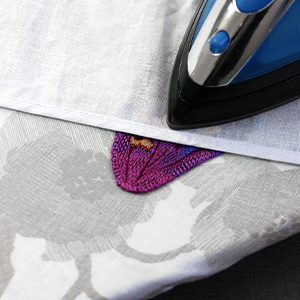
After soaking, allow the piece to air dry. Once dry, iron it using a pressing cloth to protect your embroidery.
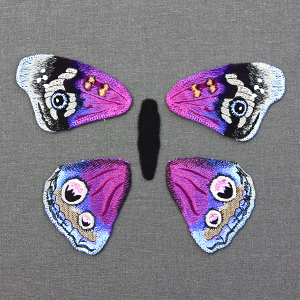
Repeat the previous steps to embroider the remaining pieces of the butterfly.
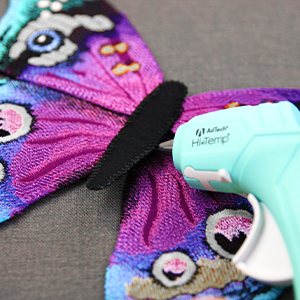
In this tutorial, the butterfly is assembled using a hand sewing needle and thread that matching the inner details. If preferred, a hot glue gun or other clear glue can be used to assemble the butterfly instead.
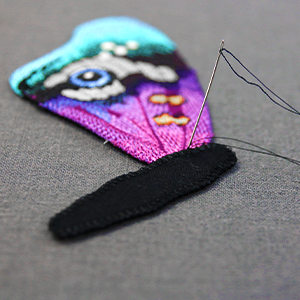
Begin by attaching the top two wings onto the body. Make sure all right sides are facing up. The body should be on top of the top wings.
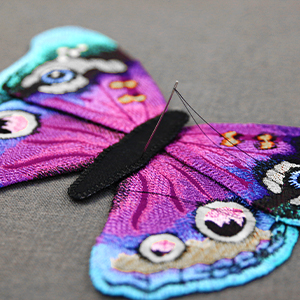
Then, add the lower wings onto the body. Make sure they tuck under the top wings slightly.

